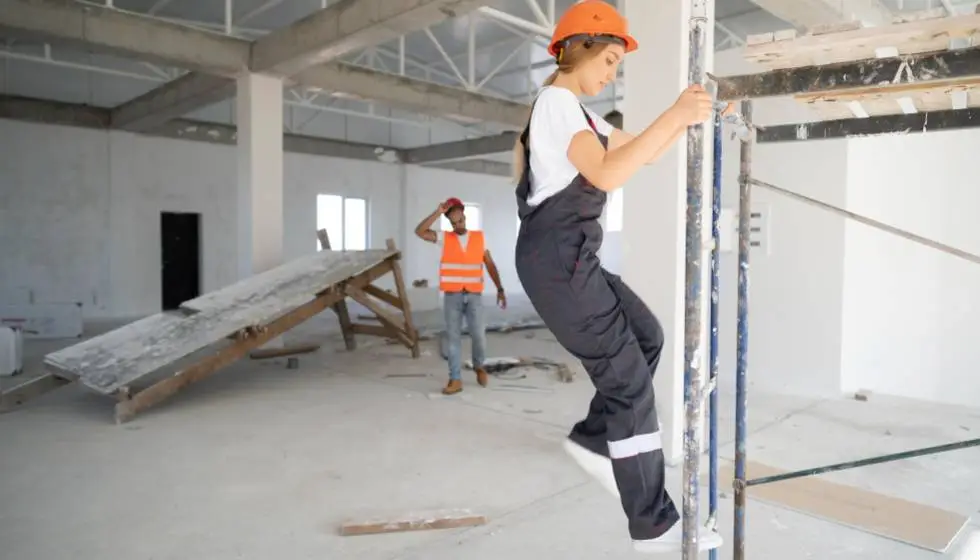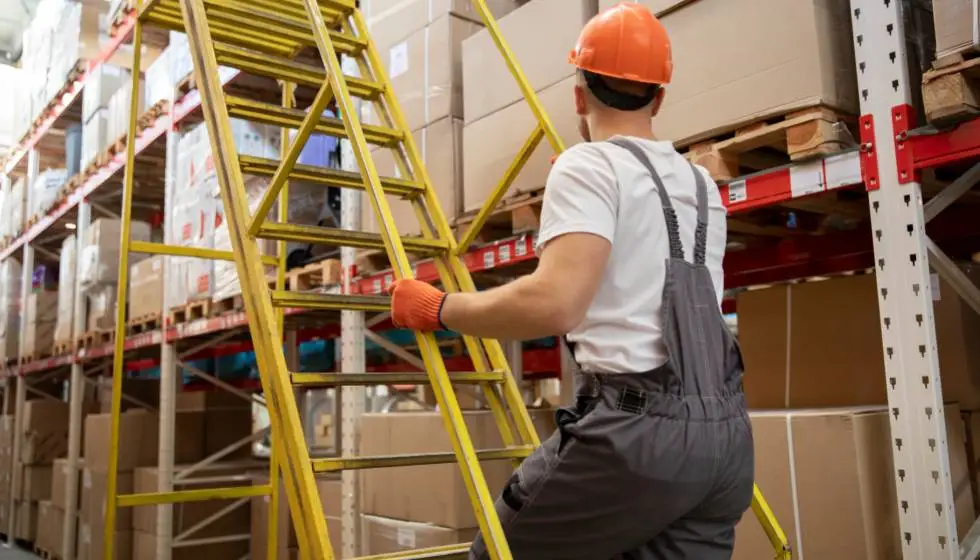Importance of Ladder Safety
Ladders might seem straightforward, but they come with their own set of hazards. Falls from ladders account for a significant number of workplace injuries every year. In Ontario alone, more than 2,000 injuries are reported annually. That’s why following proper ladder safety guidelines is crucial for both novices and pros.
HSE Ladder Safety Guide
The Health and Safety Executive (HSE) provides comprehensive guidelines to help minimize the risk of accidents. Key takeaways include:
- Selecting the Right Ladder: Ensure it’s suitable for the job’s height and weight requirements. You don’t want to end up like a wobbly giraffe because you’re on a ladder meant for toddlers.
- Inspecting the Ladder: Check for any defects, loose parts, or damage. Bent rungs, cracked frames, or missing rubber feet are all big no-nos.
- Using Proper Angle and Support: Ladders should be set up at a 75-degree angle and firmly placed on stable ground.
- Maintaining Three Points of Contact: Keep two feet and one hand or two hands and one foot on the ladder at all times.
- Avoiding Overreaching: Stay within your ladder’s boundaries, or else you might be reaching for a hospital bill.
Safety Guidelines for Ladder Setup
Proper ladder setup is essential to prevent accidents. Here’s a quick guide:
- Clear the Area: Ensure there’s no debris, tools, or cables that might cause your ladder to slip.
- Secure on Stable Ground: If the ground is uneven or slippery, find another spot or use a leveling device.
- Angle Matters: For an extension ladder, follow the 4-to-1 rule. For every 4 feet of ladder height, the base should be 1 foot away from the wall.
- Secure the Ladder: Tie the top of the ladder to a secure point to prevent sideways movement.
- Check Weight Ratings: Every ladder has a maximum load capacity. Don’t exceed it unless you’re fine with becoming a cautionary tale.
Step Ladder Safety Tips
Step ladders are great for quick tasks or tight spaces, but their compact size can create a false sense of security. Keep these step ladder safety tips in mind:
- Fully Extend the Hinges: Make sure the step ladder’s hinges are fully locked before climbing.
- Don’t Stand on the Top Rung: The top step isn’t a bonus standing point. Stick to the lower rungs.
- Keep Your Tools Handy: Use a tool belt or a secure tool tray to keep your hands free while climbing.
- Don’t Lean: Step ladders aren’t built to handle side loads, so don’t lean out to reach something. Move the ladder instead.
- Inspect Before Use: Check for loose screws, rust, or any structural defects that might make the ladder unsafe.
Construction Ladder Safety Tips
Construction workers have unique challenges when it comes to ladder safety. Here’s a list of construction ladder safety tips to keep in mind:
- Position Carefully: Construction sites can be hectic, with heavy machinery and other workers nearby. Set up your ladder away from moving equipment and busy pathways.
- Use Personal Protective Equipment (PPE): Hard hats, non-slip boots, and safety harnesses can be life-savers.
- Secure Tools: Make sure your tools are tied down and won’t fall on someone’s head. A wrench dropping from 15 feet up can turn into a high-speed missile.
- Maintain Clean Surfaces: Remove oil, mud, or any other slippery substances from ladder rungs and shoes.
- Training Matters: Ensure all workers have completed ladder safety training to understand best practices and recognize potential hazards.
Final Thoughts
When it comes to ladder safety, the rules are simple, but the stakes are high. Follow the ladder safety guidelines, check out the HSE ladder safety guide, and remember these step and construction ladder safety tips to keep yourself out of the danger zone.
Need a refresher on ladder safety Ontario regulations or want to up your safety game? Valley WorkSafe offers a specialized Ladder Safety Certification Course. If you’re looking for more hands-on training to supplement that knowledge, join us for an in-person Working At Heights Training, we offer courses in the Renfrew County and Ottawa Valley area for tradespeople, employers and home-owners committed to staying safe, no matter how high the challenge!
Related Video:



